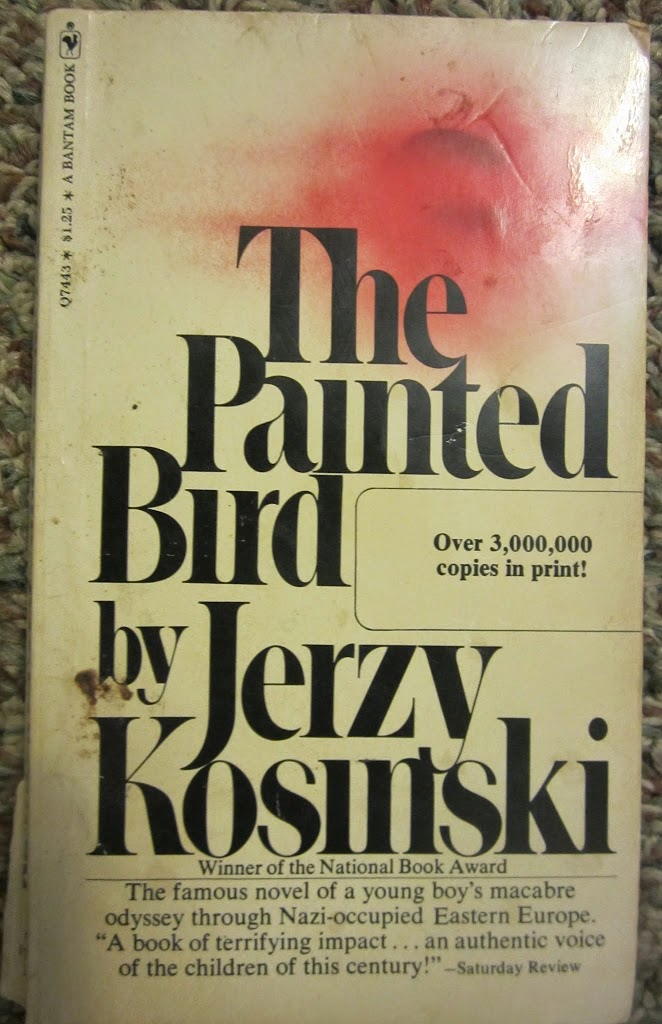I had a friend, another Polish refugee, Jerzy Kosinski. He didn’t have much and was always hungry, so I take him for a few dinners at the hospital for free. A Jewish group helped him get to Columbia. Then he get an apartment, then becomes a freelance photographer, and then a writer.
A daughter of the attache’ of Embassy of Poland, Dr. Lucretia _______, was seeing him. She was a beautiful girl, very nice girl, I love her. Nancy loves her. She was my student in the YMCA and I taught her swimming. She was my very good friend and she likes me very much. She liked Kosinski, another Polish guy. They were very friendly together and fell in love. Nancy and I would visit Kosinski and his girlfriend in his apartment.
One day, Mr. Kosinski got a notice at Columbia University that Mrs. Weir, a widow, needs someone to coordinate her books, the library in her house. So they ask Kosinski to do so. He visits her the Polish way – he bought a bouquet of roses, then went to her Fifth Avenue apartment.
Mrs. Weir was beautiful, fragile and rich. He works with the flowers, and he works on her too. She was good in English, so in maybe a year he learn English. Maybe he studied English in Poland before he came here, I don’t know. But he was no longer with my doctor friend after meeting Mrs. Weir.
One day at St. Barnabus I am playing tennis with the doctors, comes the Jerzy Kosinski, and he says “Come see my car” I see a big limousine with chauffeur and everything. I look at him like “No Way.” “Yes, I get married to Mrs. Weir.”
Background – Jerzy Kosinski arrived in the United States in 1957. As well-to-do Polish Jews, he and his family survived WWII because local villagers assisted them at great personal risk. At one point he was taken in by a Roman Catholic family, issued a falsified baptismal certificate and even served as altar boy.
Mary Hayward Weir was the wealthy, socialite widow of Pittsburgh steel king Ernest T. Weir. I calculated the math. When she married Kosinski in 1962, she was 47 years old; Kosinski was 29; reading between the lines, her wealth certainly enabled his ability to write and become famous. They were married for four years and divorced in 1966. Kosinski’s novel The Painted Bird was published in 1965 to critical acclaim. It is a fictional account of a boy who wandered through Europe during an unspecified time frame, staying with families who were often cruel and abusive. The book was praised by Elie Wiesel. When published it was presumed to be autobiographical, and was surprisingly unflattering towards Poles. The book was banned in Poland until the fall of communism in 1989.
I have not read Kosinski’s works. The photo is of Henry’s copy of The Painted Bird. I have four of Henry’s copies of Kosinski’s books.
Background – Jerzy Kosinski arrived in the United States in 1957. As well-to-do Polish Jews, he and his family survived WWII because local villagers assisted them at great personal risk. At one point he was taken in by a Roman Catholic family, issued a falsified baptismal certificate and even served as altar boy.
Mary Hayward Weir was the wealthy, socialite widow of Pittsburgh steel king Ernest T. Weir. I calculated the math. When she married Kosinski in 1962, she was 47 years old; Kosinski was 29; reading between the lines, her wealth certainly enabled his ability to write and become famous. They were married for four years and divorced in 1966. Kosinski’s novel The Painted Bird was published in 1965 to critical acclaim. It is a fictional account of a boy who wandered through Europe during an unspecified time frame, staying with families who were often cruel and abusive. The book was praised by Elie Wiesel. When published it was presumed to be autobiographical, and was surprisingly unflattering towards Poles. The book was banned in Poland until the fall of communism in 1989.
I have not read Kosinski’s works. The photo is of Henry’s copy of The Painted Bird. I have four of Henry’s copies of Kosinski’s books.

